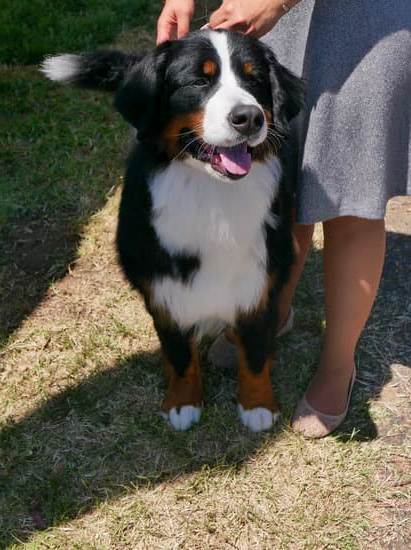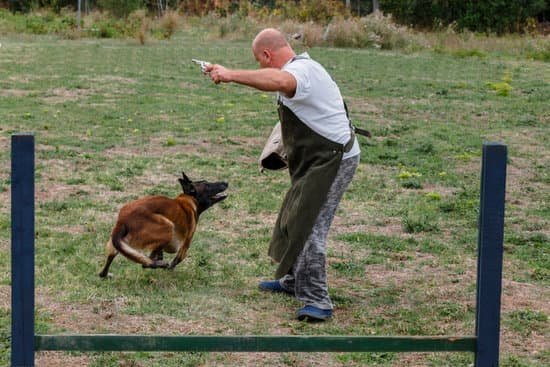Are you constantly dealing with the frustration of your dog running away every chance they get? Learning how to train dogs to not run away is essential in ensuring their safety and your peace of mind. In this article, we will explore effective techniques and strategies to prevent your furry friend from running off.
Understanding the root cause of your dog’s tendency to run away is the first step in addressing this behavior. Whether it’s due to fear, boredom, or a strong prey drive, pinpointing the reason behind their escapades is crucial in developing an effective training plan. By delving into the underlying cause, you can tailor your approach to better suit your dog’s specific needs.
Training dogs to stay is not only about preventing them from wandering off; it also serves as a fundamental aspect of responsible pet ownership. A well-trained dog that responds reliably to recall commands is less likely to get into dangerous situations and is more enjoyable to take on walks and outings. Additionally, teaching your dog to stay close by fosters a stronger bond between you and your beloved pet.
Importance of Training Dogs to Stay
Building a strong bond with your dog is essential when it comes to training them to not run away. Dogs are social animals, and when they feel a strong connection with their owners, they are more likely to want to stay by their side. Spending quality time with your dog, providing attention and affection, and engaging in activities together can help strengthen the bond between you and your pet.
Basic obedience training for recall is crucial in teaching dogs to stay when off-leash. This involves teaching your dog to come back to you when called. Consistent practice in a controlled environment can help reinforce this behavior. It’s important to start training in a low distraction setting and gradually increase the level of distractions as your dog improves.
Positive reinforcement techniques are highly effective in training dogs to not run away. Using rewards such as treats, praise, or playtime when they exhibit the desired behavior can motivate them to stay close by. It’s important to be consistent with the use of positive reinforcement and avoid using punishment-based methods, as these can damage the bond between you and your dog.
| Training Technique | Effectiveness |
|---|---|
| Positive Reinforcement | Highly effective in motivating dogs to stay close by using rewards for good behavior |
| Punishment-Based Methods | Not recommended as it can harm the relationship between you and your dog |
Building a Strong Bond With Your Dog
Additionally, communication is key in building a strong bond with your dog. Learning to understand your dog’s body language and vocalizations can help you better connect with them and address their needs. This understanding will also aid in training them effectively, including teaching them not to run away. By being attuned to your dog’s behaviors and motivations, you can tailor your training approach to suit their individual personality and needs.
Furthermore, another way to foster a strong bond with your dog is through training activities themselves. Working together on obedience and recall exercises not only strengthens the skills needed for them to stay by your side but also deepens the trust between you and your pet. Consistency and patience are vital during these training sessions, as they will help reinforce the bond you have with your dog.
| Training Method | Description |
|---|---|
| Positive Reinforcement | Using rewards such as treats or praise to encourage desired behavior |
| Communication | Understanding and responding appropriately to your dog’s signals and cues |
| Obedience Training | Teaching basic commands like sit, stay, and come for better control over your dog’s actions |
Basic Obedience Training for Recall
Understanding the Importance of Recall
Recall is an essential part of a dog’s training. It can mean the difference between life and death in certain situations, such as when your dog is about to run into traffic or towards a dangerous animal. Teaching your dog to come back to you when called not only keeps them safe but also gives you peace of mind and strengthens your bond with your pet.
The Process of Training Recall
The key to training dogs to not run away is to start with basic obedience training for recall. Begin by practicing in a controlled environment with minimal distractions. Use a long leash for added control and safety. Start by calling your dog’s name followed by the command “come” while gently pulling on the leash. When they come to you, reward them with praise, treats, or their favorite toy. Repeat this process consistently until they respond reliably.
Practicing Patience and Consistency
Training dogs to not run away takes time and patience. Some dogs may catch on quickly, while others may take longer to understand and obey the recall command. It’s crucial to remain patient, consistent, and positive throughout the training process.
Avoid scolding or punishing your dog if they don’t respond immediately, as this may cause them to associate coming back to you with negative experiences. With consistent practice and positive reinforcement, your dog will learn that coming back when called is rewarding and beneficial for them.
Positive Reinforcement Techniques
Using Treats and Rewards
One of the most effective ways to train dogs to not run away is through positive reinforcement. This involves using treats, toys, or verbal praise to reward your dog for staying close to you or returning when called.
When your dog chooses to stay by your side instead of running off, offer a high-value treat as a reward. Over time, your dog will learn that staying close to you results in positive consequences, making it more likely to repeat the desired behavior.
Clicker Training
Another positive reinforcement technique is clicker training. This method involves using a small device that makes a clicking sound when pressed, signaling to the dog that they have performed the correct behavior. By pairing the click with a reward, such as a treat or praise, dogs can quickly learn which behaviors result in positive outcomes. Clicker training can be especially effective for teaching recall and preventing dogs from running away.
Consistency and Timing
Consistency and timing are key components of positive reinforcement techniques. It’s important to consistently use rewards and praise whenever your dog exhibits the desired behavior of staying close or coming when called. Additionally, timing is crucial – rewards should be given immediately after the desired behavior occurs so that your dog understands which action led to the positive outcome.
By being consistent and timely with your positive reinforcement, you can effectively train your dog to not run away while building a strong bond based on trust and reward. Remembering that this keyword phrase “how to train dogs to not run away” can be challenging but it’s possible with positive reinforcement techniques like these.
Overall, positive reinforcement techniques are highly effective for teaching dogs not to run away. By utilizing treats and rewards, clicker training, consistency, and timing, you can encourage your dog to stay close and come when called while strengthening your bond with them. With patience and dedication, you can successfully train your furry companion to remain by your side even in tempting situations.
Creating a Safe and Secure Environment
When it comes to preventing dogs from running away, creating a safe and secure environment is crucial. By ensuring that your dog feels safe and comfortable in their surroundings, you can significantly reduce the likelihood of them attempting to escape. Here are some tips on how to create a safe and secure environment for your dog:
- Secure Fencing: Invest in a sturdy and high-quality fence for your yard to prevent your dog from easily escaping. Make sure that there are no gaps or holes where they could slip through. Regularly inspect the fence for any damages that need repair.
- Supervised Outdoor Time: When allowing your dog to spend time outdoors, it’s important to supervise them to prevent any attempts at running away. Keep them on a leash or within a designated area where they can roam safely.
- Identification Tags: Ensure that your dog wears a collar with identification tags containing your contact information. In case they do manage to get out, this will increase the chances of them being returned safely.
In addition to these measures, it’s also important to provide your dog with mental and physical stimulation in their environment. This can include interactive toys, regular exercise, and opportunities for socialization with other dogs.
By taking these steps, you can create an environment where your dog feels secure and content, reducing the likelihood of them trying to run away.
Remember, creating a secure environment is just one aspect of training dogs to not run away. It should be combined with other training techniques and consistent reinforcement methods for the best results.
Utilizing Technology for Added Security
In today’s digital age, there are various technological innovations that can be utilized to help prevent dogs from running away. These tools not only provide added security but also peace of mind for dog owners who are concerned about their furry friends escaping.
Below are some technological advancements that can aid in keeping your dog safe and secure:
- GPS trackers: GPS-enabled collars or tags can help you keep track of your dog’s whereabouts in real-time. This technology allows you to locate your dog quickly if they happen to wander off.
- Electric fences: Invisible barriers that use a boundary wire and shock collar to train dogs to stay within a designated area. When the dog approaches the boundary, they receive a mild electric stimulation, which serves as a deterrent from running away.
- Smart home security cameras: Installing indoor and outdoor cameras can provide visual monitoring of your property and alert you if your dog attempts to leave the premises. Some cameras even have two-way audio capabilities, allowing you to talk to your pet remotely.
By integrating these technological solutions into your overall strategy for preventing dogs from running away, you can enhance the effectiveness of your training efforts and ensure the safety of your beloved pet.
With the right combination of training, positive reinforcement, and technology, dog owners can significantly reduce the risk of their pets running away. It is important to remember that no single method is foolproof, but by incorporating these tools into your approach, you can greatly increase the likelihood of keeping your furry companion safe at home.
Remember, every dog is unique, so it may take some trial and error to find the best solution that works for both you and your canine companion. With patience and consistency in utilizing these technologies alongside proper training techniques, you can minimize the chances of your dog running away while strengthening the bond between you and your pet.
Consistency and Patience in Training
When it comes to training dogs to not run away, consistency and patience are key factors in achieving success. Dogs thrive on routine and responding to consistent cues, so it’s important to establish a training schedule and stick to it. Consistent reinforcement of desired behaviors will help your dog understand what is expected of them, ultimately leading to better obedience.
Patience is also crucial in the process of training a dog not to run away. It’s important to remember that every dog learns at their own pace, and some may take longer than others to fully grasp the concept of staying close by. Rushing the training process can lead to frustration for both you and your dog, so it’s essential to remain patient and persistent in your efforts.
Consistency and patience should be applied not only during formal training sessions but also throughout your everyday interactions with your dog. This means reinforcing the “stay” command during walks, playtime, and any other activities where there is a potential for your dog to run off. By maintaining a consistent approach coupled with patience, you can effectively train your dog to stay close by and avoid running away.
It’s important to remember that every dog is unique, so the time required for them to learn how to stay may vary. With dedication, consistency, and plenty of patience, you’ll be able to guide your furry friend towards understanding how they can safely enjoy their environment without the urge to run off.
Dealing With Specific Breeds or Individual Dogs’ Behavioral Challenges
When it comes to training dogs to not run away, it’s important to understand that different breeds may have specific behavioral challenges that need to be addressed. For example, certain breeds are known for their high prey drive, which can make them more prone to chasing after small animals or moving objects. Understanding the breed-specific traits and tendencies can help dog owners tailor their training approach to effectively prevent their dogs from running away.
Furthermore, individual dogs may also present unique behavioral challenges that require a personalized training approach. For instance, some dogs may exhibit fear-based behaviors that lead them to run away when they feel threatened or anxious. In such cases, it’s essential for dog owners to work with a professional trainer or behaviorist who can provide guidance on how to address these specific challenges and modify the dog’s behavior effectively.
In addressing breed-specific or individual behavioral challenges related to running away, one effective approach is to focus on reinforcing positive behaviors and providing appropriate outlets for the dog’s natural instincts. By understanding the root cause of the running away behavior and addressing it through targeted training techniques, dog owners can better equip their dogs with the skills and confidence they need to stay close and safe.
It’s important to remember that every dog is unique and may require a customized approach in order to successfully train them not to run away.
Advanced Training Techniques for Stubborn Runners
In conclusion, training your dog not to run away is a crucial aspect of responsible pet ownership. By understanding the root cause of running away and the importance of teaching dogs to stay, you can begin building a strong bond with your furry friend. Basic obedience training for recall, alongside positive reinforcement techniques, will help reinforce good behavior.
Creating a safe and secure environment for your dog is essential, and utilizing technology such as GPS trackers can provide added security. However, it’s important to remember that consistency and patience are key in training. Dealing with specific breeds or individual behavioral challenges may require different approaches, but with dedication and effort, any dog can learn not to run away.
Finally, for stubborn runners, advanced training techniques may be necessary. With proper guidance and persistence, even the most resistant dogs can be taught to stay by your side. By investing time and effort into training your dog not to run away, you can ensure their safety and strengthen the bond between you both.

Welcome to the blog! I am a professional dog trainer and have been working with dogs for many years. In this blog, I will be discussing various topics related to dog training, including tips, tricks, and advice. I hope you find this information helpful and informative. Thanks for reading!





